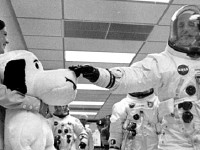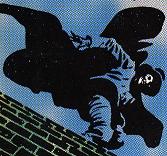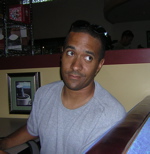Things have been a bit busy here at work. All I can say is, watch for an update by the end of the week. Hopefully I’ll post before then.
Scary way to wake up
What’s a bad thing to see after your search company has announced its stock ticker symbol and you’re getting ready for your IPO?

I know it must be just a transient outage but it’s still scary as hell.
Update: Coverage on News.com says that it’s “sporadic.” This Slashdot thread is fingering the latest MyDoom variant as the culprit. (And I just received a copy of the MyDoom.M virus in the mail (fortunately my webmail client didn’t execute the payload), so it looks like another round of joy is en route.)
What I did on the hottest day of the year
I spent what I can only hope will be Seattle’s hottest day this year touching base with some old tourist landmarks, beginning with the Pike Place Market. I came away with four good photos to reward my Saturday sweat.
The a cappella quartet in front of the original Starbucks in the first picture should be publicly acknowledged Seattle treasures. I first saw them in 2001 when Lisa and I went to our first Mariners’ game, and they can be found alongside Pike’s Place most summer weekends, even when it’s hotter than a red-assed bee outside. I especially like the Asian tourist with the Burberry hat and purse peering through the window behind the quartet. As I snapped this picture, the lead singer (leftmost) was calling out “Even at Starbucks Coffee Tea and Spices, I’m gonna let it shine.”
Loback Meat Company: Quality Always in the second picture. I always wanted to get a good clear photo of this. I didn’t want to use a flash, so I had to steady my hand to adjust for the slower shutter speed, and took three or four pictures propped against a nearby pillar. I like the backsplash of the red neon on the ceiling paint, and there’s something thematically appropriate about the steady sign contrasting with the blurred faces below.
Next is today’s silly phonecam picture, taken outside SAM (where I had just seen the Van Gogh to Mondrian exhibit). I wanted to contrast the big Borofsky sculpture with the shorts-clad tourists. (Also good in the museum this time: the two oversized Joseph Cornell hommages by Curtis Steiner and Galen Lowe; discussed at the bottom of this article on the untold story exhibition.)
Finally, the old barefoot guy in shorts. I liked this man’s face, and the baby being pulled up the hill next to him.
Democratic politics gets its angel round
New York Times (Magazine): Wiring the Vast Left-Wing Conspiracy. Even the title of the piece must make conservatives apoplectic. It makes me a little queasy. But the article is a brilliant dissection of the effects of campaign finance reform on the flow of money and the policy creation process in the Democratic party—and outside it. It’s really interesting to think what some of the money that was poured into dot-bombs in the late ’90s could do now in the political process—and who the equivalents to Marc Andreeson and Jeff Bezos will turn out to be in the political arena.
Greg gets back on the horse
Lots of good posts from Greg today over at the Green[e]house, after the weirdness of Cathy’s Tuesday primary loss. I’m certainly looking forward to talking with you over some drinks soon, Greg. In the meantime I’m just glad to welcome you back to the ranks of active bloggers.
Optimism in the face of the end of the world
Between Bonhoeffer’s Letters and Papers from Prison and The Day After (which my host is currently watching and I’m failing to avoid), I really need to find something cheerier. Maybe some Joy Division.
—About The Day After. Judging from the IMDB message boards, the kids who didn’t grow up with the Cold War think the movie is pretty hokey. I’d agree with that, watching it again with the benefit of 21 years of better special effects and the end of the Soviet Union. But I also remember that I watched it at the age of 10 or 11. And rode the bus to school with the kids from my neighborhood, who were normally a pretty reprehensible bunch of cut-ups (and some actual delinquents), but on that day everyone was absolutely quiet. Kids talked quietly to each other in their seats. My neighbor from across the street, who was known to beat me up from time to time, talked to me and quoted the Einstein saying that appeared in the movie: “I know not with what weapons World War III will be fought, but World War IV will be fought with sticks and stones.” Three years later I was still periodically being jolted awake with dreams that the bombs had fallen.
As for today, I’m grateful we no longer face the spectre of imminent annihilation (though I don’t think the alternative of lots of small scale terrorist attacks is much better). I feel fortunate to have lived through the 90s, during which it seemed for a time, prior to September 11, 2001 anyway, that we could think about war and peace on a human scale again, free of the shadow of the Cold War. I think this is part of what is at the root of my opposition to the restriction of our liberties, the reckless headlong plunge toward war in the Middle East, the growing cloud of suspicion (which has gotten so bad that a dark-skinned photography student can be singled out as a possible terrorist for taking photos of one of Seattle’s most notable tourist attractions) of our fellow man: that I have tasted freedom from fear in my lifetime and do not want to surrender to fear once more.
Here Bonhoeffer points the way, in his essay “After Ten Years,” written in 1943 during his imprisonment. Two things he wrote in this essay, after being denied the freedom to publish, to preach, to teach, and ultimately to leave his cell, stick with me in some quiet way:
Surely there has never been a generation in the course of human history with so little ground under its feet as our own. Every conceivable alternative seems equally intolerable. We try to escape from the present by looking entirely to the past or the future for our inspiration, and yet, without indulging in fanciful dreams, we are able to wait for the success of our cause in quietness and confidence. It may be however that the responsible, thinking people of earlier generations who stood at a turning-point of history felt just as we do, for the very reason that something new was being born which was not discernible in the alternatives of the present. …
Optimism: It is more prudent to be a pessimist. It is an insurance against disappointment, and no one can say “I told you so,” which is how the prudent condemns the optimist. The essence of optimism is that it takes no account of the present, but it is a source of inspiration, of vitality and hope where others have resigned; it enables a man to hold his head high, to claim the future for himself and not to abandon it to his enemy. Of course there is a foolish, cowardly kind of optimism which is rightly condemned. But the optimism which is will for the future should never be despised, even if it is proved wrong a hundred times. … To-morrow may be the day of judgment. If it is, we shall gladly give up working for a better future, but not before.
Come in, Snoopy: do you read?
I followed a pointer from Scoble to the Apollo Image Gallery at the Project Apollo Archive. This is a fabulous online archive of photos from the first manned US space flights through the last Apollo mission, including:
- The original seven astronauts
- The “Freedom 7” launch carrying Alan Shepard into space
- Ed White performing the first US space walk during Gemini 4
- The tragic fire that cost the lives of Ed White, Gus Grissom, and Roger Chaffee during a training session for Apollo I at Pad 34
- Apollo 10, on which the command module was “Charlie Brown” and the lander was “Snoopy” (prompting some fabulous publicity photos (see above) and a classic Peanuts strip)—see also this interesting discussion about the “Silver Snoopy” quality award that was instituted to get the program back on track after the Apollo 1 disaster
- An enormous set of photos from Apollo 11, the first manned landing on the moon
- Apollo 13, the mission that inspired the movie
- And all the rest of the missions through Apollo 17 in 1972
It’s tremendous to see this archive of photos, many of which I’ve grown up with, become available on line. It’s also a bit sad. On the day I was born in 1972, the Apollo 17 crew was just getting ready to start the final manned mission. I was barely two weeks old when the crew splashed down into the Pacific Ocean. In the intervening 31-plus years, man hasn’t left Earth orbit.
(I can’t link directly to the images in the archive at present because it’s been overwhelmed with traffic and is temporarily being mirrored offsite.)
PhotoPeer lights up
Paul Colton’s other software company, PhotoPeer, released its first downloadable bits yesterday, in the form of the PhotoPeer client for the Mac. It’s an impressive effort so far, integrating pretty seamlessly with iPhoto. I’m still waiting for both my invitations to others to join the service to be accepted so that I can see how it all works, though.
More market inequities: the UK iTunes Music Store
A while ago I wrote about arbitraging the iTunes Music Store against Amazon, with a Miles Davis live album that could be bought for about 12% the cost of the Amazon version just because it only had two tracks. With the release of the European iTMSes, there’s another market inequity that becomes visible, but unfortunately it’s not as consumer friendly.
Case in point #1: PJ Harvey. The UK site has an exclusive EP for “You Come Through,” with two songs unavailable on the US store (“Stone” and “Who the F**k (4 Track Version)”).
Case #2: Nusrat Fateh Ali Khan. Three US albums of which one is partial, vs. 9 UK albums (plus two that are remastered versions).
Other examples: the Cure (15 US, 25 UK); Genesis (14 US, 21 UK); even U2 (21 US, 41 UK — including some Achtung Baby era singles whose b-sides aren’t available anywhere else and which I’ve been trying to find for years). (It also cuts both ways; there are no Peter Gabriel solo albums currently available in the UK store.)
So what’s the problem? Credit cards work across national boundaries, don’t they? I mean, I can order from Amazon.co.uk, so I should be able to order from the UK iTMS, right?
Wrong. For some inexplicable reason, my account will only work in the US store; attempting to purchase a song in the UK store redirects me to the US store, where I get told the track isn’t available. I suspect it has to do with billing address on the credit card.
Why should this be? There are no physical inventory issues—I’m sure that the files all live in the same set of servers at Akamai or wherever. So I suspect it’s the music industry’s fault. Can anyone explain the precise legal and economic issues to me? Better, can someone suggest a legal billing-address or other workaround—i.e. how does one get a credit card with a UK billing address???
On vendettas and visions of dystopia
Salon: The man who invented the future. Interview with Alan Moore, writer of many “comic book” dystopias, on the odd resonances between many of his works and the current War on Terror. While normally people like to name-check The Watchmen in this context, here the interviewer (Scott Thill) accurately checks the parallels with V for Vendetta:
[Moore]: Fascism is like a hydra — you can cut off its head in the Germany of the ’30s and ’40s, but it’ll still turn up on your back doorstep in a slightly altered guise. … “V for Vendetta” has had an annoying way of coming true ever since I wrote it in the early ’80s. Back then, I wanted something to communicate the idea of a police state quickly and efficiently, so I thought of the novel fascist idea of monitor cameras on every street corner. And the book was, of course, set in the future of 1997. But by that year — and I don’t know if Tony Blair and Jack Straw were big fans, but evidently they thought its design for future Britain was a really good one — we had cameras on every street corner along the length and breadth of the country.
(Aside: I had a ridiculously large comic collection in middle and high school—one of the dubious perks of working at a comic store was not having to go very far to spend one’s paycheck—and V for Vendetta was one of the few works I kept when the rest of the collection was sold wholesale. I would love to say that I was making the connections at a young age, but I doubt I went further with it than the general affinity that the intellectual kid who gets beaten up at the bus stop feels with victims of real oppression, and the gratitude that that same kid feels to those who dramatize the exile that they feel inside. That’s not to say that I wasn’t politically conscious, just that I didn’t always go out of my way to get really informed beyond what I saw and reacted to in the news magazines. Hopefully I’ve learned a few things since then.)
I always felt that, Moore’s vision of the dystopia aside, that his character’s reaction to it—the “vendetta” of the book’s title—was profoundly unsatisfying when you got right down to it. I wonder whether this is a reflection of the sense I have that the book is trapped in British history. The first volume opens with echoes of Guy Fawkes, who is today celebrated for failing to change the order of the world in his attempt to bomb Parliament, and V’s methods don’t really move past that (except directly to murder). There’s no vision for change beyond the ending of the current order and the placing of the people’s fate in their own hands. I guess that Moore’s point was that it should end there, that solving the problems needs to be done by the people rather than by some narrator or revolutionary.
(Link via BoingBoing. More writing and analysis on the work at the V for Vendetta shrine and the annotations by Madelyn Boudreaux.)
To fight another day
Condolences to the Cathy Woolard campaign. I guess whatever else you can say about Georgia politics, the state is never boring and never predictable.
MetUp
Just got back from the Seattle Weblog Meetup. Lots of old familiar faces there tonight—Anita has the full list. I was bummed not to see Jake there, but I got to meet Samantha, Chaz, Ian and Mary. —Yes, Ian as in Ian Spiers of BrownEqualsTerrorist.com fame. We all had a lot of fun taking pictures of each other and then asking each other for ID as a result. (That’s a picture of Ian to the right.) Ian described his feelings of wandering around the Ballard Locks watching other tourists happily snap photos after his encounter with The Man as feeling as though he had been “raped at Disneyland”; we promptly decided that that phrase would have made a much better title for his blog.
I also met Manuel, who actually road-tripped down to LA for the opening of the SENT exhibition. I tried not to mention the exhibition, feeling somewhat photographically overshadowed with tyd, Tara, Jeff, and Flipdingo there, but Jeff was kind about the photo. Manuel and I got into a conversation about the experience at the exhibition. (In a word: alienating unless you’re in the right crowd. And no matter how tall you think Xeni is, she’s apparently taller.)
All in all, it was a pretty good time for my last Seattle weblog meetup. But that’s a story for another time.
Transparent things
I made it to the Eastside Sing last night, where we did a quick two-hour unrehearsed run-through of the Verdi Requiem. Because my old chorus, the Cascadian Chorale, was one of the co-sponsoring groups, I also finally got my copy of the group’s CD, Premiere. Both proved to be memorable musical experiences.
The last time I sang the Verdi was with the Cathedral Choral Society in Washington, DC, in the mid-to-late 90s. There we had full orchestra, a 150-voice choir, and severely strained vocal cords—at least on my part. I was still learning how to use my voice, and four seasons singing in the highly resonant acoustic of Washington National Cathedral had grown my volume but not my control—meaning that by the time a concert rolled around I had usually taken my voice right to the edge. Last night, by contrast, felt wonderfully relaxed and I was nailing high B-flats without any problems. The difference, I think, is due to continued practice with the Cheeselords, groups in graduate school, the UPC choir, and especially with the Cascadian Chorale, whose music staff, Phillip Tschopp and Christina Siemens, taught me as much vocal technique in a single season as I had learned in the previous eight years of singing after college.
In addition to the vocal sensations, the singing last night was just fun. It was good to see some Cascadian folks again, including some soloists we had worked with before, and to sing next to Norman and Matthew.
I listened to the CD last night and this morning, and was greatly impressed. I think the long hours of rehearsal and recording really paid off. Technically the vocal work is hard to critique—maybe a little hard to hear some consonants, though that may be due to mic placement and the resonant acoustics in which we recorded. Aesthetically the sound is outstanding. I’m looking forward to picking up some additional copies to share with my family.
More Microsoft RSS: Education
New RSS feed at Microsoft.com: Education (from our Education vertical site). This feed is interesting for a couple of reasons. First, it’s aimed at students and teachers rather than developers or IT professionals. Second, it’s an entirely separate effort from our automatic component-based RSS feeds; the education site team decided on their own that this would make a big difference to their customers, so they went ahead and did it. Bravo, guys. Now the only thing missing is the orange-on-white badge…
Update 7/21: The editor of the site, John Spilker, also has a personal blog where he announced this new feed. Be sure to stop by.
Happy Birthday, Dad
My dad hits one of those milestone birthdays today (the Beatles one, for those of you playing along at home). After the excitement earlier this year, it’s especially good to be able to wish him many happy returns.
Of course, today is also the 35th anniversary of the Apollo 11 moon landing—serendipitously enough, given my dad’s thirty-something year history as a NASA employee. That (unfortunately pop-up laden) page on Space.com, in which the moon mission is discussed in the context of a return to space, carries a little of how I feel today. The significance of a birthday or anniversary like today isn’t what went before, but in what is still to come. In both cases for today, I’m feeling pretty good about what’s coming next.
Many happy returns, Dad.




